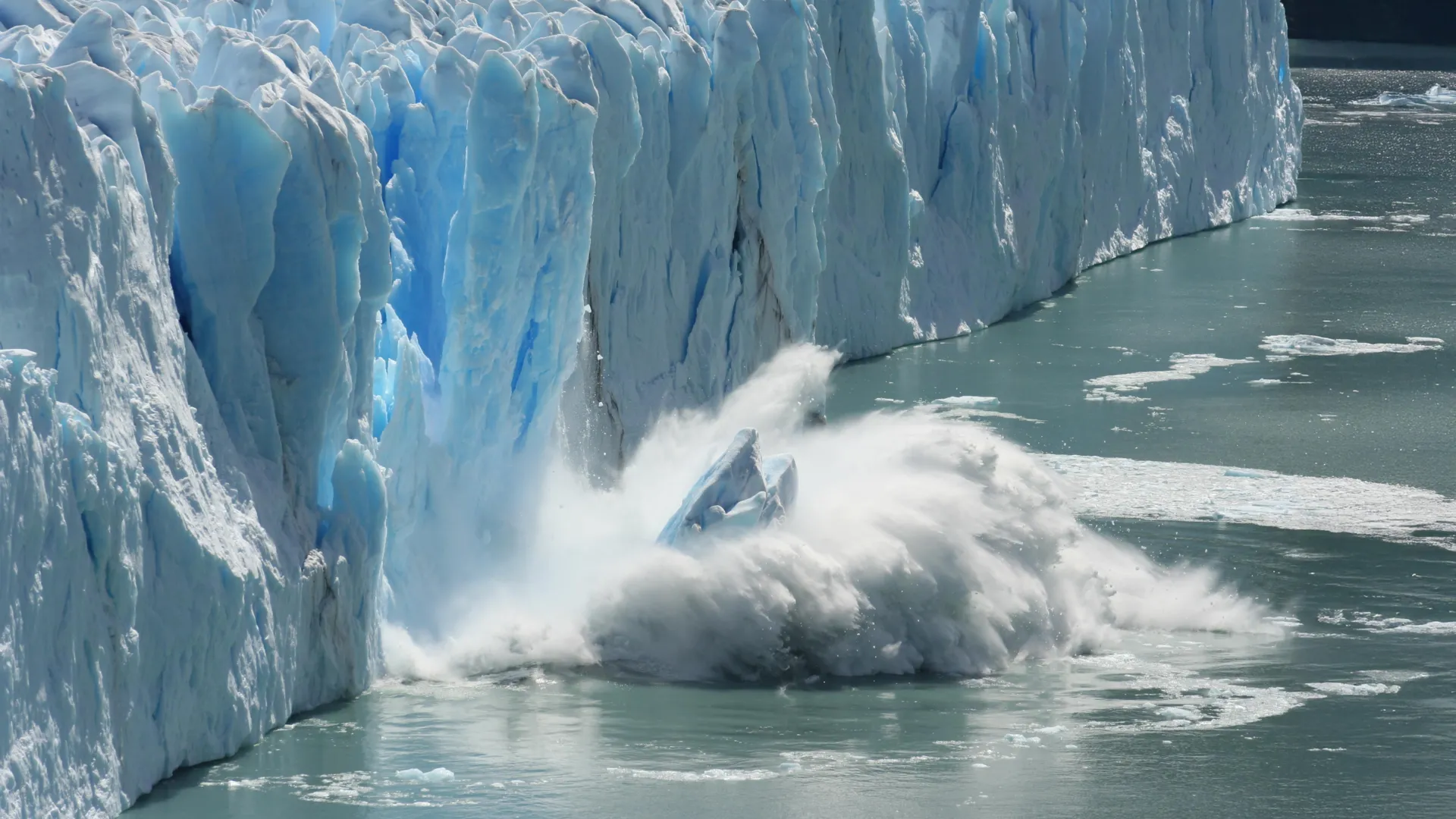9,000-year-old ice melt shows how fast Antarctica can fall apart
New research reveals that East Antarctica’s ancient ice collapse was driven by a self-reinforcing feedback between melting ice and warm ocean currents.
- Date:
- November 9, 2025
- Source:
- Research Organization of Information and Systems
- Summary:
- Around 9,000 years ago, East Antarctica went through a dramatic meltdown that was anything but isolated. Scientists have discovered that warm deep ocean water surged beneath the region’s floating ice shelves, causing them to collapse and unleashing a domino effect of ice loss across the continent. This process created a “cascading positive feedback,” where melting in one area sped up melting elsewhere through interconnected ocean currents.
- Share:

A new study published in Nature Geoscience reveals that the East Antarctic Ice Sheet (EAIS) experienced a major retreat about 9,000 years ago, triggered by a powerful feedback between melting ice and ocean currents. Led by Professor Yusuke Suganuma of the National Institute of Polar Research (NIPR) and the Graduate University for Advanced Studies (SOKENDAI), the research team discovered that warm deep water flowing into coastal East Antarctica caused ice shelves to collapse, which in turn sped up inland ice loss.
The findings suggest that Antarctic ice retreat is not confined to one area but can spread across regions through oceanic links, amplifying ice loss on a continental scale. This process, in which meltwater from one region accelerates melting elsewhere, is known as a "cascading positive feedback." Understanding this chain reaction offers crucial insight into why Antarctic ice sheets may be inherently unstable, both in the distant past and in the modern era.
Reconstructing Ancient Ice-Sheet Collapse
The study set out to identify what caused the large-scale ice loss in East Antarctica thousands of years ago.
The East Antarctic Ice Sheet, which holds over half of Earth's freshwater, is already losing ice in some coastal zones today. Knowing how these massive ice systems responded to earlier warm periods provides valuable clues to their future under modern climate change. To trace this history, the team analyzed marine sediment cores collected from Lützow-Holm Bay, near Japan's Syowa Station along the Sôya Coast. These were combined with geological and geomorphological surveys across Dronning Maud Land.
The sediments were obtained through decades of Japanese Antarctic Research Expeditions (JARE) between 1980 and 2023, including recent sampling from the icebreaker Shirase. Using sedimentological, micropaleontological, and geochemical analyses, along with measurements of beryllium isotope ratios (10Be/9Be), the researchers reconstructed past environmental changes in the bay. Their data show that around 9,000 years ago, warm Circumpolar Deep Water (CDW) surged into the bay, leading to the collapse of floating ice shelves. Once these shelves broke apart, their loss of structural support allowed inland ice to accelerate toward the sea.
Modeling Reveals a Cascading Ocean Feedback
To determine why warm deep water intensified during that period, the researchers ran climate and ocean circulation models. These simulations showed that meltwater from other Antarctic regions, including the Ross Ice Shelf, spread throughout the Southern Ocean. This influx of freshwater freshened the surface ocean, strengthening vertical stratification and preventing cold surface water from mixing downward.
As a result, warm deep water was able to move more easily toward East Antarctica's continental shelf. This created a reinforcing cycle: meltwater increased stratification, which in turn enhanced warm-water inflow, causing even more melting. The models demonstrate that this kind of interconnected "cascading feedback" could allow melting in one sector of Antarctica to trigger or accelerate ice loss in others through large-scale ocean circulation patterns.
A Warning Echoing Across Millennia
The research provides some of the clearest evidence yet that Antarctica's ice sheet can undergo self-reinforcing, widespread melting when the planet warms. Although the event occurred in the early Holocene epoch, when global temperatures were naturally higher than during the last Ice Age, the same physical processes are relevant today.
Modern observations show that parts of the West Antarctic Ice Sheet -- such as the Thwaites and Pine Island glaciers -- are already retreating rapidly as warm deep water intrudes beneath them. If similar cascading feedbacks are happening now, localized melting could spread and accelerate overall ice loss, contributing to faster global sea-level rise.
International Collaboration and Global Implications
The project involved more than 30 institutions, including NIPR, the Geological Survey of Japan (AIST), the Japan Agency for Marine-Earth Science and Technology (JAMSTEC), the University of Tokyo, Kochi University, Hokkaido University, and partners from New Zealand, Spain, and other countries.
This large-scale collaboration combined field surveys, marine sediment studies, cosmogenic nuclide dating, and advanced coupled climate-ocean modeling to reconstruct how the Antarctic ice-ocean system evolved.
Professor Suganuma emphasized the broader meaning of the findings: "This study provides essential data and modeling evidence that will facilitate more accurate predictions of future Antarctic ice-sheet behavior. The cascading feedbacks identified in this study serve to underscore the notion that minor regional alterations can potentially engender global ramifications."
Story Source:
Materials provided by Research Organization of Information and Systems. Note: Content may be edited for style and length.
Journal Reference:
- Yusuke Suganuma, Takuya Itaki, Yuki Haneda, Kazuya Kusahara, Takashi Obase, Takeshige Ishiwa, Takayuki Omori, Minoru Ikehara, Robert McKay, Osamu Seki, Daisuke Hirano, Masakazu Fujii, Yuji Kato, Atsuko Amano, Yuki Tokuda, Hokuto Iwatani, Yoshiaki Suzuki, Motohiro Hirabayashi, Hiroyuki Matsuzaki, Takeyasu Yamagata, Masao Iwai, Kota Katsuki, Francisco J. Jimenez-Espejo, Hiroki Matsui, Koji Seike, Moto Kawamata, Naohisa Nishida, Masato Ito, Shin Sugiyama, Jun’ichi Okuno, Takanobu Sawagaki, Ayako Abe-Ouchi, Shigeru Aoki, Hideki Miura. Antarctic ice-shelf collapse in Holocene driven by meltwater release feedbacks. Nature Geoscience, 2025; DOI: 10.1038/s41561-025-01829-7
Cite This Page: